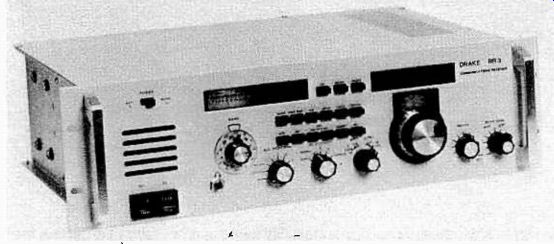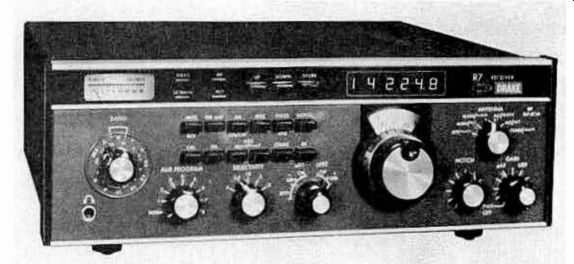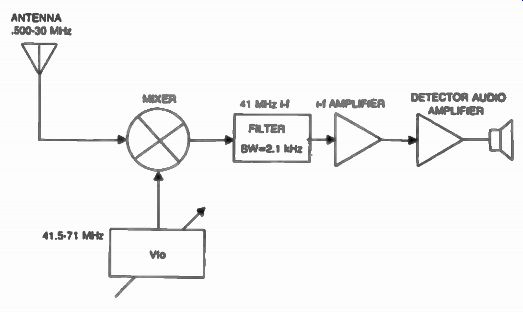New types of receivers have appeared during the past decade. Figures 1, 2, and 3 show some examples. The advent of crystal filter design made up-conversion radios a reality. Today crystal filters can be fabricated at frequencies up to 150 MHz. However, bandwidths of 2 kHz or so cannot yet be obtained at frequencies above 30 MHz, because of crystal technology problems, making the dream of producing a single up conversion receiver with an i-f above 30 MHz an impossibility (Fig. 4). As technology improves, this type of radio should be the preferred choice, over the double- and triple-conversions, because of the minimum number of mixers involved, as well as the minimized image problems.

Fig. 1. The RR 3 communications receiver is a modern implementation
of a triple conversion approach with the first i-f at 48.05 MHz, the
second i-f at 5.645 MHz, and the third i-f at 50 kHz. This receiver was
designed primarily for maritime communications (courtesy of R.L. Drake
Co.).

Fig. 2. The Kenwood R-1000 receiver is an example of modern receiver
technology. It is synthesized in one MHz steps with the use of a digital
phase locked loop which also provides automatic switching for one of
the six preselector filters. Fine tuning is obtained with a permeability
tuned oscillator which is part of the loop.

Fig. 3. A synthesizer and a permeability tuned oscillator are also
used in the Drake R7 receiver.

Fig. 4. Envisioned single conversion (up-convert) superheterodyne
with i-f a 41 MHz. This scheme cannot be implemented presently because
of the i-f filter limitations.